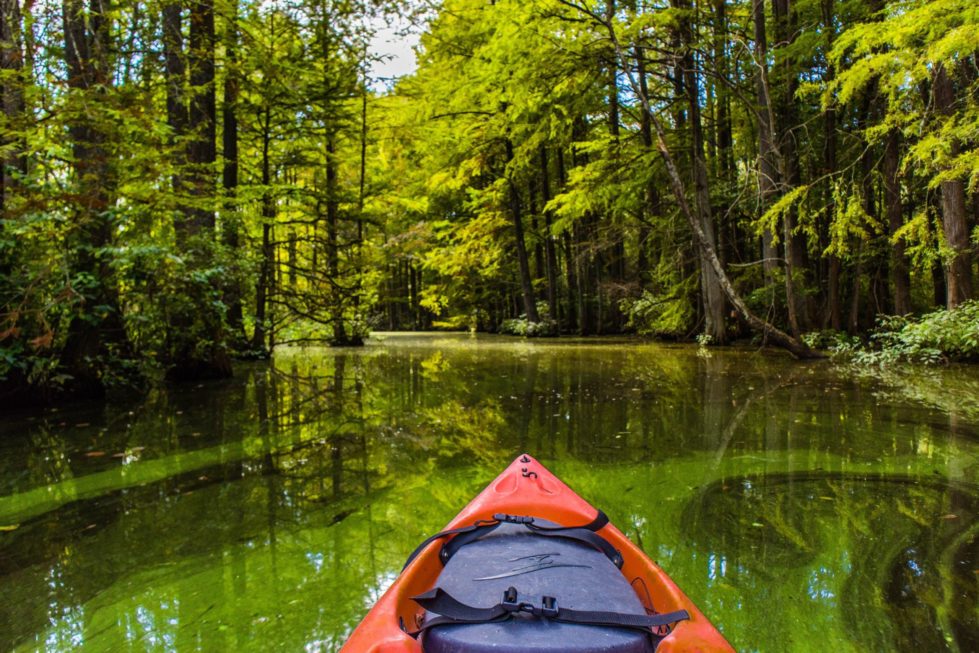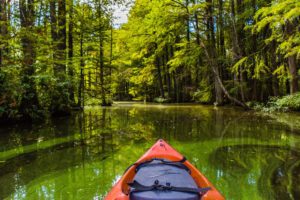by Terry Rogers
Bonnie Hall, Chairman of the Board of Directors for Southern Delaware Tourism (SDT) recently spoke at a gathering of organization leaders and business owners about tourism in the area. After providing a background of what SDT’s goals and missions are, Hall provided some details on tourism in the first state.
“Tourism is the second leading economic engine in Sussex County with agriculture the first,” Hall said. “So, when you look at what organizations or businesses or industries are bringing money into our county, agriculture is number one and tourism number two. 85 percent of SDT’s budget goes into marketing Southern Delaware. In 2021, SDT distributed $498,980 in funding grants to Chambers of Commerce in Sussex County for local tourism promotion. Those grants generated $2.3 billion in visitor spending while supporting approximately 19,750 jobs and counting. That significant tourism spending helps us diversify and stabilize our local economy and contributes to the state and local tax base. It also helps us as individual citizens because households save $1,564 in taxes annually. Many folks don’t realize that tourism does offset our own taxes. The impact of travel and tourism brings new money into our communities. For every one dollar spent directly by a visitor, another $1.20 is generated in indirect sales to the local economy.”
Hall also explained that SDT produced three videos highlighting outdoor recreation in the county, one of which was featured at the recent Ocean City Film Festival. Rob Walker, a videographer, along with Hall worked with the Zwaanendael Museum to identify black beaches in Delaware. Hall explained that she worked with Nanticoke elders to discover information about beaches that were predominantly African American, including Rosedale and Jimmy Walker beach. The video highlights some of the national entertainers who visited those beaches, including Ray Charles and Stevie Wonder.
“Noah Harmon was one of our Nanticoke elders who owned all of that land,” Hall said. “Under his leadership, it had been a park where churches would go to have their picnics. He had a carousel there. He had an ice cream stand and I love hearing my elders talk about the wonderful times that family spent after church on that beach.”
One area where Hall felt Milford could capitalize on visitors to the Delaware was through ecotourism which is growing in the area. She suggested that the town look at paddling and canoeing on the Mispillion as a way to draw tourists. Jo Schmeiser, Executive Director of the Chamber of Commerce for Greater Milford, stated that the chamber had been working with DuPont Nature Center, Abbott’s Mill and Milford Parks and Recreation to create ecotourism opportunities.
“We’ve been talking about doing tours with Delmarva Discovery Tours,” Schmeiser said. “Unfortunately, we have hit a bit of a snag as the Mispillion drawbridge was damaged in an accident and DelDOT is talking about not fixing it which means it will not be able to open and close. This could impact how we offer tours as a section of the river will now be inaccessible by boat.” Claudia Leister, Executive Director of the Milford Museum, pointed out that there were people whose livelihood was fishing who wintered their boats on the wrong side of the bridge and that this was presenting a significant problem to them as well.
Hall also discussed the Culinary Coast, an initiative that partners with restaurants and other organizations in the food service industry. Through that initiative, SDT has been able to obtain coverage in national publications, including “Travel Leisure,” “Food and Wine,” “National Geographic Traveler,” “Forbes” and more. John Huntzinger asked if there were any plans to capitalize on that in Milford.
“Something we have been working on for a few years before COVID hit was a Culinary Passport,” Schmeiser said. “One of my biggest pet peeves is when people say there is no place to eat in Milford. I am like, are you serious? We have Asian, we have American, we have Italian, and I am talking right off the boat Italian, we have Puerto Rican, Haitian, Japanese, Tex Mex, the new Surf and Turf and Benvenuto. We’re working on a project that will even make locals more aware of the many food options available as well as getting folks from out of town to realize that Milford has so many diversified options.”
Huntzinger pointed out that he was surprised at the Irish options provided at an Irish dance festival held at the First Presbyterian Church a few years ago.
“We’re beginning to see a lot of pent-up travel ambitions and demand with our visitors,” Hall said. “We’re seeing some changes. We’re getting back to a little bit of normalcy. All of us are anxious to get back visiting with our friends, our relatives to do some travel. And we’re beginning to see that demand increase already. I live in Millsboro and it’s hard for me with all the development that is going on in our town, Millsboro is one of the fastest growing towns in the county, in the state, basically, but the traffic is horrific. It is horrific. So when you look at promoting tourism, and balancing it with the quality of life, it’s hard. It’s very challenging. But even so, we’re seeing this pent-up energy and demand for travel, we know it’s coming. It’s beginning to materialize. That’s good news, but it also presents our industry with more unprecedented challenges and byproducts of the pandemic. We’re seeing severe labor shortages. We’re having a difficult time maintaining quality controls as it relates to our services and our guest experiences. Our shoulder seasons are the festivals that many of our chambers and towns promote and support. And those events have extended what we call the 20 earning weeks window because it helps to draw vacationers and guests to our areas to supplement that offseason revenue. But one of the most important questions we have got to ask ourselves is how do we maximize this industry without necessarily risking our quality of life?”
It is important to look at several factors when it comes to tourism, Hall stated. Organizations, municipalities and businesses must look at how much economic activity can be generated, how much local tax revenue tourism can generate and how much local spending may be generated by tourist activity. According to Hall, 58 percent of American travelers are beginning to change their plans because of changes related to the pandemic. Approximately 89 percent of Americans plan to travel in the next six months while 26 percent plan to visit friends and relatives in the next year. Over 70 percent of Americans are actively engaged in travel planning and many hope to take at least three trips over the next year.
“It sounds like a lot of this is going after small groups, individuals, family groups, to encourage them to come and visit,” Huntzinger said. “When I travel, I am usually part of a tour like over to Europe or wherever. Is there any of that type of thing going on? Because when we go places, usually they have somebody with local knowledge that comes in and talks to us about the history or whatever the tour is about.”
Hall stated that a lot of towns are doing walking tours, like one in Lewes that focuses on the African American heritage of the town. Leister stated that the Milford Museum offers walking tours in the fall but that they were considering adding spring tours as well. Mitch Edmondson explained that if you travel overseas, the tour guides are licensed and they must undergo considerable training to provide the service, suggesting that small towns in Delaware could benefit from a similar program,
“If you get a call from DMI or the Chamber of Commerce who’d like to bring over a group,” Mr. Edmondson said. “If you had a list of tour guides that really knew their stuff, they could conduc the tour and I am sure people would pay for them. So, not necessarily a volunteer, but somebody who would be responsible for doing that, I think that would be a tremendous asset.”
Loretta Edmondson mentioned that whenever they travelled, they booked a food tour. She felt that now Milford was in a position to offer something similar.
“When we go to New York City or something, we pay $30 and you get a little tasting at each spot,” Mrs. Edmondson said. “And you get a little history as you go around. It is talking about history, but you are eating at the same time. You don’t sit down, you stand up, but you find these places. Then, when we go back to New York, we look for the places and eat there again. It is usually at a time when no one is there, like at three in the afternoon.”
Huntzinger agreed, pointing out that he and his wife attended Foodie Nights at the Tea and Spice Shop in Rehoboth. They had tried to coordinate something in Milford with Abbott’s Grill, but the restaurant closed before they could have the event. Leister explained that when Zack and Marissa King finish the renovations of the former bank building, they planned to do events similar to that. Schmeiser mentioned the ghost tours offered by the Milford Museum every October.
“That is definitely growing,” Leister said. “Through the research I did, you can learn about the suicides, the murders, the drownings, the poisonings, all these things that have happened in Milford.” Schmeiser stated that the tour begins at The Towers and ends at Causey Mansion, pointing out that one couple celebrated their anniversary at The Towers and enjoyed the ghost tour as well. At the end of the tour, those attending learn about the four resident ghosts who live in Causey Mansion from the owners, Leister stated.
Mr. Edmondson agreed that those types of tours were an excellent way to highlight Milford, but he noticed another area where Milford was lacking when it came to attracting visitors.
“The other thing is just people who want to go out and do something on the spur of the moment. And that brings me to bicycle paths,” Mr. Edmondson said. “Loretta and I are living in exile in Lewes right now. I am dying to get back to Milford, but I love the bike paths there and some of them are connected with Cape Henlopen. They’re also through the city of Lewes. Actually, it’s faster to go on bicycle in that area than in my car. Milford is missing the boat. Because that’s what people love to do. And you know, we’ve got this beautiful river but you’ve got to get people off the street when you are doing it. It is no fun when you are my age to try to navigate a bicycle if you are competing with traffic. You need to have a designated path.”
Schmeiser explained that the city was working on creating bicycle paths. The TAP project planned for Northwest and Northeast Front Street will include shared use paths for bicycles and pedestrians. When all phases of the project are complete, there will be a shared use path from Route 113 to Rehoboth Boulevard. Sarah Bluhm, Economic Development and Community Engagement Director with the City of Milford, stated that the city will hold a workshop on another greenway project soon.
“This project will start over by the farm we bought near the Rookery and, hopefully, will get out to Milford Ponds,” Bluhm said. “That’s the ultimate goal. There’s some potential benefit if the drawbridge never opens again because we may be able to have a bike path that will go that way and out to Slaughter Beach. Right now, the bridge is a bit of a constraint.”
Share this Post



